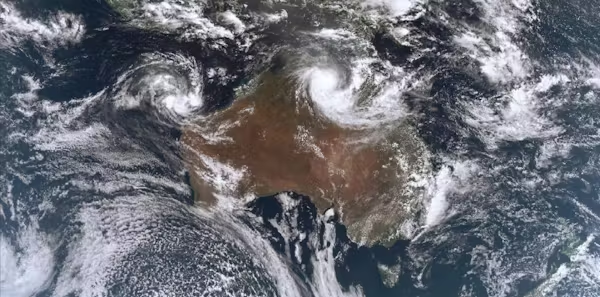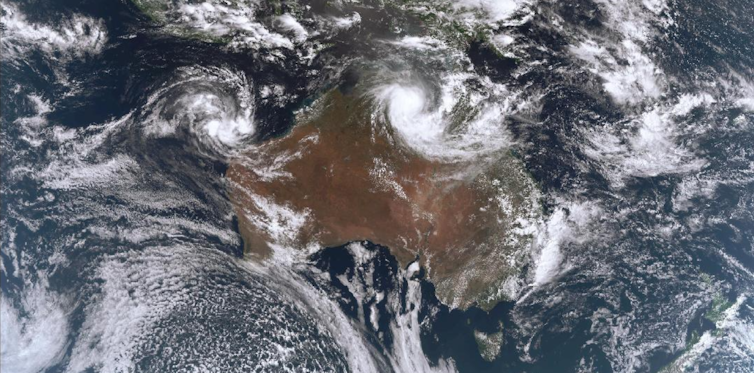Contrary to popular belief, weather forecasting is improving rather than declining.
- byAdmin
- May 10, 2024
- 1 year ago

The Australian meteorological bureau faced severe backlash after El Niño failed to bring eastern Australia's much-anticipated dry summer. A record rainy December fell in parts of northern Queensland during Tropical Cyclone Jasper, while a record wet January fell in parts of central Victoria. The summer was 19% wetter overall than the norm for all of Australia.
This sparked discussion over the Bureau of Meteorology's capacity to produce precise forecasts as the climate changes in the media and during senate estimates. It has been questioned if seasonal forecasting is really useful.
In actuality, weather forecasting has been better recently. Furthermore, fascinating advancements in artificial intelligence are soon to come. However, nothing is currently known about how future climate change may affect seasonal and weather forecasting.
As climate scientists, we are aware that seasonal projections and 7–14-day forecasts perform rather well in extreme situations. This is so that organisations like the Bureau may compare the accuracy of their projections to actual data and make the results available to the public. Although it's feasible that in certain areas climate change may make it more difficult to anticipate the weather and the seasons, we think advancements in forecasting will outweigh any decreases in precision.
improvements in forecasting
Since its inception in 1922 by British physicist Lewis Fry Richardson, weather forecasting has been increasingly precise and potent.
The advancement of computational power has led to a significant advance in meteorological research.
Currently, several computer models use very comprehensive satellite data and meteorological observations as input. Because of this, 7-day predictions are often accurate, albeit they are not as accurate in less developed countries.

We can now watch the weather significantly more accurately than in the past thanks to satellite data. On March 18, 2024, the Japanese Himawari-8 satellite took this picture. The Meteorology Bureau
Since we are never fully aware of the status of the environment at any one moment, it is helpful to do several simulations with somewhat varied initial circumstances. This illustrates the potential changes in the weather and the degree of trust we have in them.
Seasonal climate forecasting is based on the same concepts as weather forecasting. Three-month forecasts are provided by projecting forward in time models of the ocean and atmosphere.
We are unable to predict with absolute precision the weather for a given place and time for more than around 10 days. However, we can estimate the likelihood that the weather will deviate greatly from the seasonal norm in terms of heat, cold, dryness, or moisture.
In only the last 20 years, we have come a long way in forecasting circumstances for the upcoming season. Our understanding of how different climatic factors affect our weather has improved, and our computer capacity to run models has increased.
But model-based seasonal forecasting, which offers month-by-month location-specific information on expected temperature and rainfall relative to the long-term norm, is still relatively new. It still has to go farther to give decision-makers trustworthy, practical information.
How can the accuracy of a forecast be determined?
Because organisations like the Bureau of Meteorology have entire teams dedicated to comparing their forecasts with what really transpired, meteorologists are able to determine whether their predictions were correct or incorrect after the fact.
Weather prediction contingency chart
"Yes, an event will happen" or "no, the event will not happen" is the statement of a dichotomous prediction. Common instances of yes/no predictions include those for rain and fog.
A basic example of how scientists determine the accuracy of a forecast is shown in the table above. A variety of scores can be computed based on the quantity of hits, misses, false alarms, and accurate negatives.
This gets trickier when we want to find out not just if the prediction was accurate in predicting rain, but also how much and if the stated chance of rainfall was accurate.
Additionally, models can now mimic weather systems with a more realistic appearance, such as lines of thunderstorms, thanks to advancements in sophistication and resolution. It's similar to seeing high definition television as opposed to blurry black and white. High resolutions make it harder to assess forecast capacity since they magnify errors that we wouldn't have seen in the past.
Overall, there have been significant advancements in weather forecasting skill throughout time. Since there is less area available for weather stations in the Southern Hemisphere, these advancements are most noticeable there. Satellite data has significantly increased our understanding of the atmosphere's condition in these remote locations, giving forecast simulations a stronger foundation.
While seasonal forecasting is becoming more accurate, the changes are not as well studied. The ability to predict seasonal patterns differs based on the season and the presence or absence of significant climatic factors such the El Niño-Southern Oscillation, which is the annual oscillation between El Niño, neutral, and La Niña phases.
In spring, when the El Niño-Southern Oscillation is at its apex and El Niño or La Niña is frequently giving strong and consistent pushes to seasonal temperatures and rainfall, seasonal predictions are most accurate. On the other hand, seasonal predictions are usually less accurate in the fall when the El Niño-Southern Oscillation is changing phases and the factors influencing rainy or dry weather are less known.
So, is our capacity to forecast the weather being impacted by climate change?
Our weather is undoubtedly changing due to climate change. However, it's unclear if that makes weather prediction more difficult. Not much study has been done on this as of yet.
Predictability may alter in some ways, especially if individual thunderstorms provide more rain than larger-scale weather systems. With climate change, this is generally expected and appears to be happening in certain areas of Australia now. Although the nature of such a shift is unclear, it probably would complicate the prediction of local rainfall totals.
When more rain occurs in small-scale systems that are not highly correlated with the El Niño-Southern Oscillation, we already observe a decrease in seasonal forecast skill in the summer. Seasonal prediction may also be facilitated or hindered by variations in the intensity of the association between Australian climate and climatic factors, such as the El Niño-Southern Oscillation.
It's doubtful that anybody will detect any influence of climate change on weather forecast skill very soon, given the rapid advancement in weather prediction. Any impact of climate change on prediction is expected to be overwhelmed as seasonal and weather forecasts become more accurate as a result of scientific and technical advancements.
Post a comment
Hot Categories
Recent News
Russian antiviral company After a prohibition, Kaspersky leaves the US
- Jul 16, 2024
- 1 year ago
The U.S. in the Crossfire: How American Bases in the Middle East Are at Risk
- Jun 20, 2025
- 7 months ago
Daily Newsletter
Get all the top stories from Blogs to keep track.


1 comment
The Blogzshop
May 18, 2024 1 year agobhut bardiya